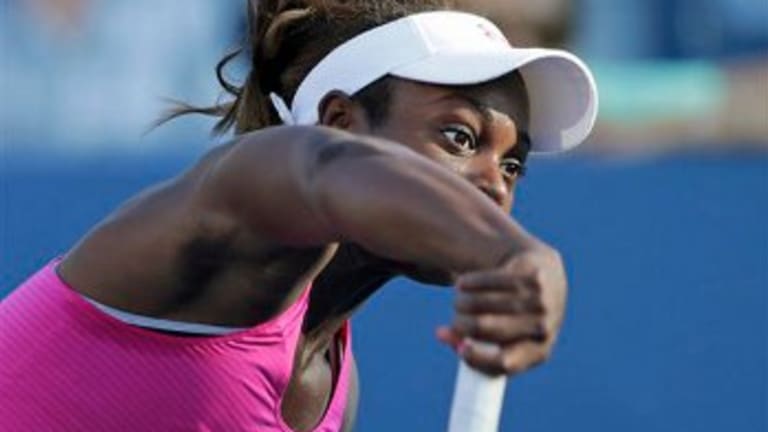NEW YORK—“Like a stupid! Like a stupid!” Francesca Schiavone was admonishing the chair umpire after the second game of the second set for something she felt he failed to do, but she might as well been chastising herself. At 32 and the fourth oldest player in the draw, Schiavone had the experience check in her column over her opponent, unseeded 19-year-old Sloane Stephens. But the former Roland Garros champ and 22nd seed played a sloppy, thoughtless match, making the steady and composed Stephens look like the accomplished veteran. In rather routine fashion, the American won 6-3, 6-4.
The role reversal started in the opening two games. Stephens gamely fought off two break points to hold serve, while Schiavone donated her service game with five double faults. Stephens only had to win one point with her racquet. Schiavone had no rhythm on her first serve all day, ending with a paltry 48 percent success rate. Many of her serves missed badly, getting caught by the bottom of the net or sailing way wide of target. (Schiavone’s groan when serving sounds like she’s dropping an F-bomb—maybe she’s anticipating the result.)
Schiavone did get the break back, but it mostly came through Stephens’ generosity. Eventually, Stephens settled down and went about her game plan of peppering the Schiavone forehand. The Italian’s loopy strokes result in great spin, but they are elaborate in design. It’s no wonder she does her best work on slower clay courts, where she beat Stephens in Strasbourg earlier this year. When pressured on a quick surface, however, Schiavone can be late to contact and errors ensue. She donated nine forehand unforced errors in the first set alone (16 for the match). But perhaps the real difference in the set was Stephens’ wheels. With Schiavone serving at 3-4, she twice tried the drop shot—one off a volley—and each time Stephens got to it with ease and put the ball away. Stephens would break and serve out the set.
Schiavone was stubborn with the drop shot, constantly testing Stephens and getting burned. By my (unofficial) count she was 0-for-6 with the tactic. It was difficult to tell if Stephens was that quick or the drop shots were that poorly executed; probably a little of both. Still, Stephens does have the speed gene (her late father, John, was an NFL running back) and it’s every bit the weapon her forehand is. Schiavone repeatedly missed volleys—she went just eight for 23 on net points—because she was searching for an angle fine enough to beat Stephens.
The second set played out similarly to the first. Stephens got up an early break, gave it back, and after exchanging a few holds, found the clinching break in the seventh game. Schiavone got stingy and fought off two match points to hold her serve at 3-5, and made Stephens work when serving it out the next game, but her wake-up call was an hour too late. Stephens sealed the match with a blistering forehand winner up the line. The win moves Stephens to 4-9 against Top 30 opponents this year. A few more like it, and that’s where her ranking will be.
—Jon Levey


